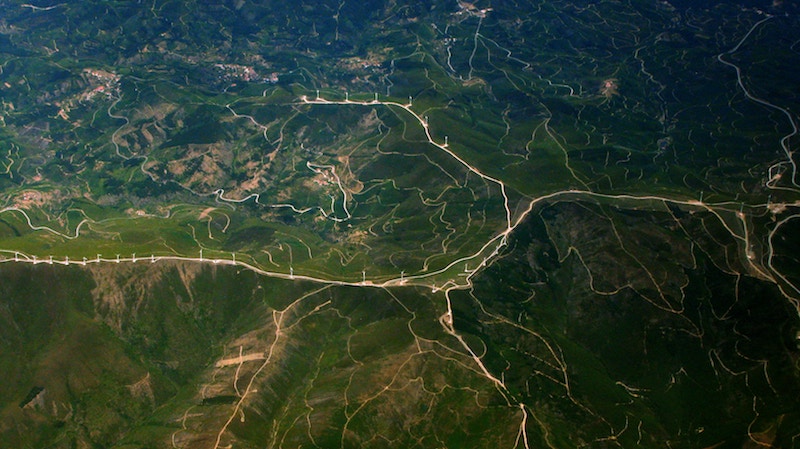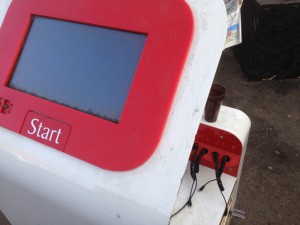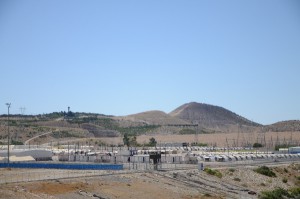
 This is a guest post by Mark Latonero, PhD. Mark is a fellow at Data & Society, a nonprofit research institute in New York City that is focused on the social, cultural, and ethical issues arising from data-centric technological development. Mark is also a research professor and research director at the Annenberg Center on Communication Leadership & Policy, University of Southern California.[clear]
This is a guest post by Mark Latonero, PhD. Mark is a fellow at Data & Society, a nonprofit research institute in New York City that is focused on the social, cultural, and ethical issues arising from data-centric technological development. Mark is also a research professor and research director at the Annenberg Center on Communication Leadership & Policy, University of Southern California.[clear]While many of us might feel we cannot live without the Internet or our cell phones, for refugees access to digital technologies can be a matter of life or death. Numerous media reports have highlighted how smartphones are essential and vital for refugees as they travel along perilous routes, contact lost family members, or find safe places before dark. But focusing on one technology misses the bigger picture. Social media, mobile apps, online maps, instant messaging, translation websites, wire money transfers, cell phone charging stations, and Wi-Fi hotspots have created a new infrastructure for movement as critical as roads or railways. Together, these technologies make up a digital passage that is accelerating the massive flow of people from places like Syria, Iraq, and Afghanistan to Greece, Germany, and Norway. The tools that underpin this passage provide many benefits, yet are also used to exploit refugees and raise questions about surveillance.

Solar-powered device charging station, Belgrade. November 2015. CC BY-NC-ND-licensed photo by Mark Latonero.
As the pictures of Aylan Kurdi, a Syrian boy who drowned off the Turkish coast, shocked the world in September of last year, we also learned the boy’s father was texting to his sister-in-law in Vancouver as the doomed boat left port. Relatives wired money electronically from Canada to pay for the human smugglers who often coordinate using digital devices. Having led the Annenberg Technology and Human Trafficking Initiative at the University of Southern California for the last five years, I have seen many examples of the dark side of digital tools.
Traffickers use the same technologies we use daily to extract profit from those desperately seeking a better life.
Human smugglers in Libya and Egypt use Facebook to advertise “trips to Italy.” Mobile phones and messaging services like Viber are a primary means for smugglers to organize illicit boats, trucks, and lodging. Since many refugees are isolated, undocumented, and unaware, they are more vulnerable to these crimes enabled by digital connectivity. At the same time, mobile tools like WhatsApp and Skype also serve as a digital lifeline. I recently spoke to a Norwegian officer working aboard a ship in the Mediterranean that responds to distress signals from refugees calling from sinking boats.
Unlike the great migrations of years past, the digital passage allows for numerous ways to keep track of refugees. Every text message, money transfer, social media login, and Wi-Fi connection generates data on refugees as well as smugglers. Companies like Facebook, Vodafone, and Western Union collect and analyze such data for commercial purposes. Yahoo, Google and others are starting to explore how technology can address refugee issues directly.
Governments, law enforcement, and refugee agencies also collect an array of personal information on refugees. In the Western Balkans in November, I observed how data is collected at official border crossings. Thousands of people crossing borders daily have their names, photographs, ages, and country of origin recorded multiple times along the journey. National border police along with the UN Refugee agency use biometric technologies to take digital fingerprints and eye scans. Other European governments and military contractors use advanced tools such as satellite imagery, drones, and big data analytics to track and monitor individuals crossing borders. Officials and aid workers could use this data to provide needed services to refugees.
It may be tempting to assume this data can also be used to identify individuals who might pose a threat to safety and security. In July, Europol started monitoring social media for human smugglers along with terrorists in an effort that might help. But there can be unintended consequences. For one, it’s a classic needle in a haystack problem. To find one suspect would require dragnet surveillance on everyone using these services. While the data can help identify individuals with an existing criminal history, big data analytics are less accurate about predicting behavior. The data lends itself for profiling such that the innocent will inevitably be swept up with the suspicious. Technology companies would need to share data with governments and law enforcement, which remains a deeply fraught political issue particularly in Europe. Another concern is properly securing this data to prevent refugee’s personal information from falling into the wrong hands.

Syrian refugee camp near the south border of Turkey. July 2013. CC BY-NC-ND 2.0-licensed photo by Allison Mickel.
Refugees are among the world’s most vulnerable people. Studies have shown that undue surveillance towards marginalized populations can drive them off the grid. Both perceived and real fears around data collection may result in refugees seeking unauthorized routes to European destinations. This avoidance strategy can make them invisible to officials and more susceptible to criminal enterprises. Data collection on refugees should balance security and public safety with the need to preserve human dignity and rights. Governments and refugee agencies need to establish trust when collecting data from refugees. Technology companies should acknowledge their platforms are used by refugees and smugglers alike and create better user safety measures. As governments and leaders coordinate a response to the crisis, appropriate safeguards around data and technology need to be put in place to ensure the digital passage is safe and secure.
Mark Latonero is a fellow at Data & Society Research Institute where he leads the Data and Human Rights program. Find @latonero and contact@latonero.com
(CC BY: this article can be shared and reposted freely with attribution)




4 thoughts on "For Refugees, a Digital Passage to Europe"